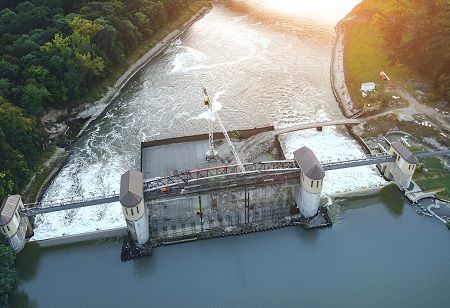
- Uzbekistan launches its largest-ever hydropower project in Namangan region.
- Norin HPP Cascade to generate 1,025 million kWh annually, powering ~430,000 homes.
- Fully domestically funded and executed by Uzbekhydroenergo using local engineering and manufacturing.
Uzbekistan made a giant leap toward sustainable energy and local manufacturing by embarking on the largest hydropower development in the history of the Namangan region (the "Norin HPP Cascade"). Uzbekhydroenergo JSC is leading this hydropower project as part of a larger national plan to improve the country's renewable energy capacity through large scale, small and micro hydropower development.
The Norin HPP Cascade consists of six hydroelectric power plants, each with a capacity of 38 mega watts, for a total installed capacity of 228 mega watts. This ambitious infrastructure project is situated on the Norin River, and is being constructed by Uzbekhydroenergo fully using internal cash flows, with no outside funding.
On July 6, 2025, a high-level government delegation, made up of Prime Minister Abdulla Aripov, the Minister of Energy, Minister of Water Resources, and hokim of the Namangan region, visited the site, highlighting its national importance. Officials examined project progress, construction stages, and technical specifications, confirming that the first unit (HPP-1) would be commissioned before Uzbekistan's 34th Independence Day.
Also Read: Uzbekistan, Azerbaijan Sign Deals to Boost Industrial Ties
What differentiates this project is that it is entirely local. All construction, design, and engineering work are consequently being carried out by local companies, with the main hydropower equipment being manufactured in Tashkent's Bostanlık district at UzHydroPower's plant. Under the name Uzbekistan hydropower factory, the plant is an operation of the Uzbekhydroenergo company who are producing equipment marked "Made in Uzbekistan" and are the first fully national hydropower project.
Once operational, the cascade is anticipated to produce about 1,025 million kilowatt-hours of renewable electricity per year, enough to power about 430,000 households. Additionally, it is expected to save around 277 million cubic meters of natural gas each year, delivering both environmental benefits and economic benefits.
Beyond this the project will significantly boost regional energy independence, stimulate socio-economic growth in Namangan, and improve quality of life for local communities thus a model of how indigenous industrial capacity can drive green infrastructure in Central Asia.

